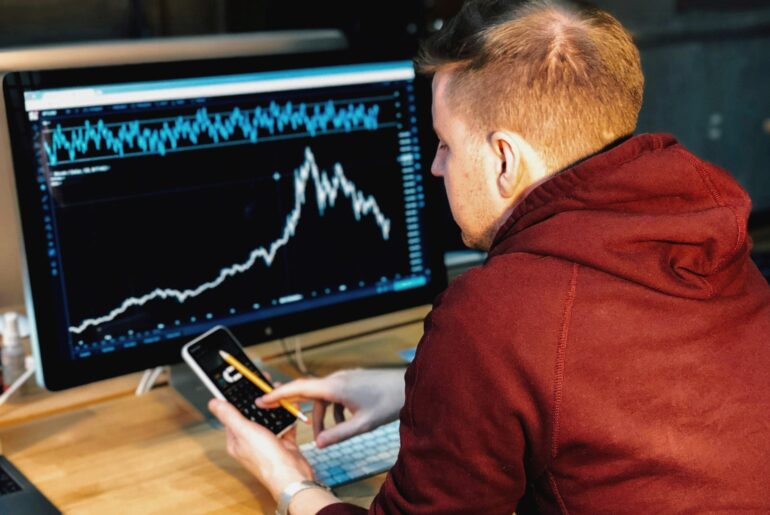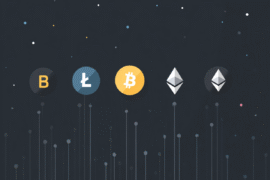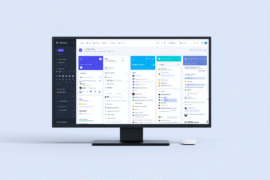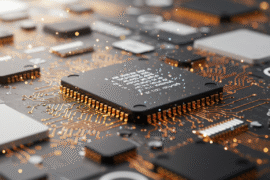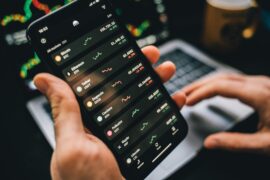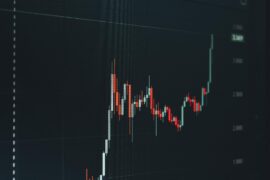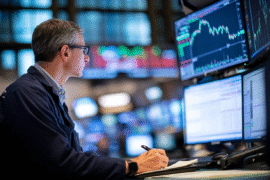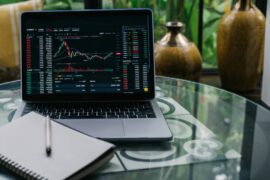This article may contain references to products or services from one or more of our advertisers or partners. We may receive compensation when you click on links to those products or services. Nonetheless, our opinions are our own.
The information presented in this article is accurate to the best of our knowledge at the time of publication. However, information is subject to change, and no guarantees are made about the continued accuracy or completeness of this content after its publication date.
Understanding FPGA Trading
FPGA trading represents a sophisticated approach to high-frequency trading. FPGAs are specialized hardware devices with configurable logic blocks. These can be programmed to perform specific tasks with exceptional speed and efficiency. In financial markets, FPGAs process market data, execute trading algorithms, and make those split-second decisions to buy or sell.
The primary advantage? Minimizing latency. This is absolutely critical in the competitive world of HFT. FPGA-based systems, leveraging hardware acceleration, analyze live market data and execute trades in nanoseconds. This significantly outpaces traditional CPU-based trading platforms. The speed allows high-frequency traders to capitalize on fleeting opportunities and gain that all-important competitive edge.
How FPGAs Changed High-Frequency Trading Markets
The introduction of FPGAs has dramatically transformed high-frequency trading. These devices have enabled traders to achieve unprecedented levels of performance.
By harnessing the capabilities of FPGAs, high-frequency traders can now execute complex strategies with remarkable speed and precision. Transactions are often completed in a fraction of the time required by traditional systems.
FPGAs have also revolutionized risk management. The ability to process vast amounts of data in real-time allows for more informed decisions and swift reactions to changing market conditions. This enhanced analytical capability has led to more sophisticated algorithms and strategies, further advancing HFT. Don’t investment banks and hedge funds need to maintain their competitive edge? They have increasingly adopted FPGA technology to make it happen in electronic trading.
Voted "Best Overall Budgeting App" by Forbes and WSJ
Monarch Money helps you budget, track spending, set goals, and plan your financial future—all in one app.
Get 50% OFF your first year with code MONARCHVIP
Core Components That Power FPGA Trading Architecture
The architecture of FPGA trading systems relies on several key components working together to deliver high-performance trading. FPGAs serve as the primary computational engines. The next critical element is the low-latency network infrastructure connecting the trading system to exchanges and market data sources. This means using very fast network connections, often dedicated fiber optic lines or wireless links, to minimize delays. The high-speed network ensures minimal delay in receiving and processing information, so traders can react swiftly to market movements. Specialized software interfaces also play a crucial role, facilitating seamless communication between the FPGA hardware and the broader trading platform. This involves special programming languages that tell the FPGA exactly what to do, and software that connects the FPGA to the rest of the trading system, including risk management tools. The result is an efficient integration of all the parts of the system.
Developing and deploying these FPGA-based systems can be complex. Companies like Magmio aim to simplify this process. For example, Magmio provides a framework where traders can write their trading strategies in C++, a widely used software programming language. This strategy code is then automatically integrated with pre-built IP cores for processing market data and exchange protocols. Once deployed, Magmio’s C++ API allows traders to manage and communicate with the FPGA card, receiving feedback and making adjustments to their strategies as needed, all without requiring deep hardware expertise.
Nanosecond Execution: The Technical Edge of FPGA Systems
The nanosecond execution capabilities of FPGA systems have profound implications for HFT strategies. Traders can capitalize on price discrepancies, execute complex arbitrage strategies with speed, and react to market events fast. This speed comes from the FPGA’s ability to perform many calculations simultaneously. Because the FPGA is hardware-based, the instructions for trading are built directly into the chip, making them incredibly fast and deterministic. This technical edge has become increasingly critical. In HFT trading, microseconds can mean the difference between profit and loss. As a consequence, HFT firms are constantly looking for ways to make their systems even faster. They might focus on optimizing how market data is processed, or creating algorithms that can react to tiny changes in price. The flexibility of FPGAs, which can be reprogrammed, is a huge advantage, allowing firms to adapt to new market conditions and strategies much quicker. Therefore, FPGA technology continues to drive the evolution of high-frequency trading markets.

Reviewed and edited by Albert Fang.
See a typo or want to suggest an edit/revision to the content? Use the contact us form to provide feedback.
At FangWallet, we value editorial integrity and open collaboration in curating quality content for readers to enjoy. Much appreciated for the assist.
Did you like our article and find it insightful? We encourage sharing the article link with family and friends to benefit as well - better yet, sharing on social media. Thank you for the support! 🍉
Article Title: FPGA Trading: What It Is and How It Works
https://fangwallet.com/2025/02/27/fpga-trading-what-it-is-and-how-it-works/The FangWallet Promise
FangWallet is an editorially independent resource - founded on breaking down challenging financial concepts for anyone to understand since 2014. While we adhere to editorial integrity, note that this post may contain references to products from our partners.
The FangWallet promise is always to have your best interest in mind and be transparent and honest about the financial picture.
Become an Insider

Subscribe to get a free daily budget planner printable to help get your money on track!
Make passive money the right way. No spam.
Editorial Disclaimer: The editorial content on this page is not provided by any of the companies mentioned. The opinions expressed here are the author's alone.
The content of this website is for informational purposes only and does not represent investment advice, or an offer or solicitation to buy or sell any security, investment, or product. Investors are encouraged to do their own due diligence, and, if necessary, consult professional advising before making any investment decisions. Investing involves a high degree of risk, and financial losses may occur including the potential loss of principal.
Source Citation References:
+ Inspo
